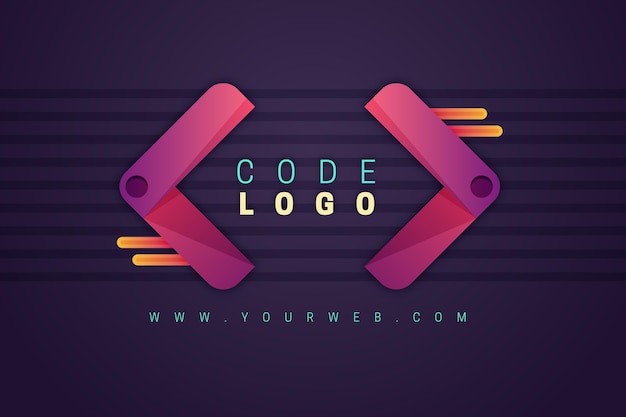Visual Studio Code Installation

Credit: Image by Freepik
To install Visual Studio Code, follow these steps:
- Visit the official Visual Studio Code website.
- Download the installation package for your operating system (Windows, macOS, or Linux).
- Run the installer and follow the on-screen instructions.
- Once the installation is complete, you can launch Visual Studio Code and start using it.
Getting Started with Visual Studio Code
To get started with Visual Studio Code:
- Open Visual Studio Code.
- Create a new file or open an existing project folder.
- Start writing code or modifying files in the editor.
- Utilize the built-in features such as IntelliSense, code navigation, and debugging.
Essential Visual Studio Code Extensions
Here are some essential extensions for Visual Studio Code:
- Bracket Pair Colorizer: Highlights matching brackets with different colors for easier code navigation.
- Prettier: Automatically formats your code for consistency and readability.
- GitLens: Provides enhanced Git functionality and code annotations within the editor.
- ESLint: Helps identify and fix common JavaScript code errors and style issues.
Customizing Visual Studio Code
You can customize Visual Studio Code to suit your preferences:
- Install themes to change the appearance of the editor.
- Configure keybindings for shortcuts that match your workflow.
- Adjust settings for the editor's behavior, such as tab size and line height.
- Install and configure extensions to enhance your development experience.
Visual Studio Code Shortcut Keys
Here are some useful shortcut keys in Visual Studio Code:
| Shortcut Key | Description |
|---|---|
| Ctrl + P | Quickly open files by name. |
| Ctrl + / | Toggle line comment for the selected line(s). |
| Ctrl + Shift + F | Search and replace in files. |
Visual Studio Code Debugging
You can debug your code in Visual Studio Code using the built-in debugger:
- Set breakpoints in your code where you want to pause the execution.
- Launch the debugger and run your code.
- When the code reaches a breakpoint, you can inspect variables, step through the code, and analyze the program's state.
- Use the debugger controls to continue the execution, step in or out of functions, and stop the debugging session.
Visual Studio Code Source Control with Git
Visual Studio Code has built-in support for Git, allowing you to manage your source code using version control:
- Initialize a Git repository in your project folder.
- Stage and commit changes to track the history of your code.
- View and compare file changes.
- Push and pull code from remote Git repositories.
Visual Studio Code Task Automation
Visual Studio Code allows you to automate repetitive tasks using tasks:
- Create custom tasks to run build processes, linting, testing, and more.
- Define tasks in the
tasks.jsonfile. - Execute tasks using shortcut keys or the command palette.
Visual Studio Code Live Share
With Visual Studio Code Live Share, you can collaborate with others in real-time:
- Share your development environment with teammates.
- Allow others to view and edit your code.
- Collaborate through voice chat and text chat.
- Debug together and share server ports.
Visual Studio Code Remote Development
Visual Studio Code supports remote development, allowing you to work on remote machines or containers:
- Connect to remote servers and edit files directly.
- Develop inside containers for consistent environments.
- Use SSH to connect to remote machines.
Visual Studio Code Mobile Version
Visual Studio Code has a mobile version called "Visual Studio Code - Code Editing for iOS and Android".
- Install the app from the App Store (iOS) or Google Play (Android).
- Connect to your development environment or remote machines.
- Access and edit your code files on the go.
- Sync your settings and extensions across devices.
Visual Studio Code Extensions for Web Development
Here are some popular Visual Studio Code extensions for web development:
- HTML Snippets: Provides HTML code snippets for faster coding.
- CSS IntelliSense: Offers CSS code suggestions and autocompletion.
- Live Server: Launches a local development server with live reloading.
- JavaScript (ES6) code snippets: Provides ES6 JavaScript code snippets for faster coding.
Visual Studio Code Mobile Version
Visual Studio Code has a mobile version called "Visual Studio Code - Code Editing for iOS and Android".
- Install the app from the App Store (iOS) or Google Play (Android).
- Connect to your development environment or remote machines.
- Access and edit your code files on the go.
- Sync your settings and extensions across devices.
Visual Studio Code IntelliSense
Visual Studio Code provides powerful IntelliSense features for code completion and suggestions:
- Get smart suggestions as you type.
- View documentation and parameter information for functions and APIs.
- Navigate through code symbols quickly.
- Customize IntelliSense behavior through settings and extensions.
Visual Studio Code Themes
Visual Studio Code supports various themes to customize the editor's appearance:
- Choose from a wide range of built-in themes.
- Install additional themes from the Visual Studio Code Marketplace.
- Customize the editor's colors and styles to create your own theme.

.png)
.png)

.png)
0 Comments